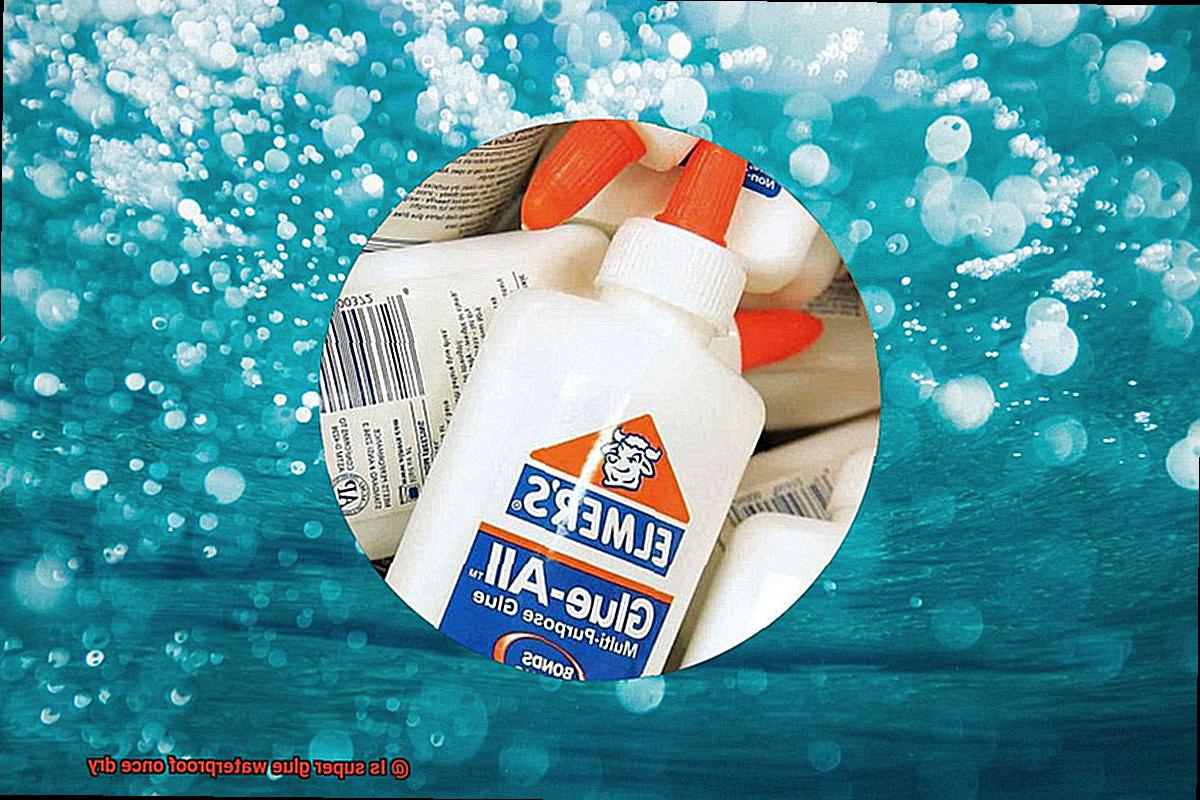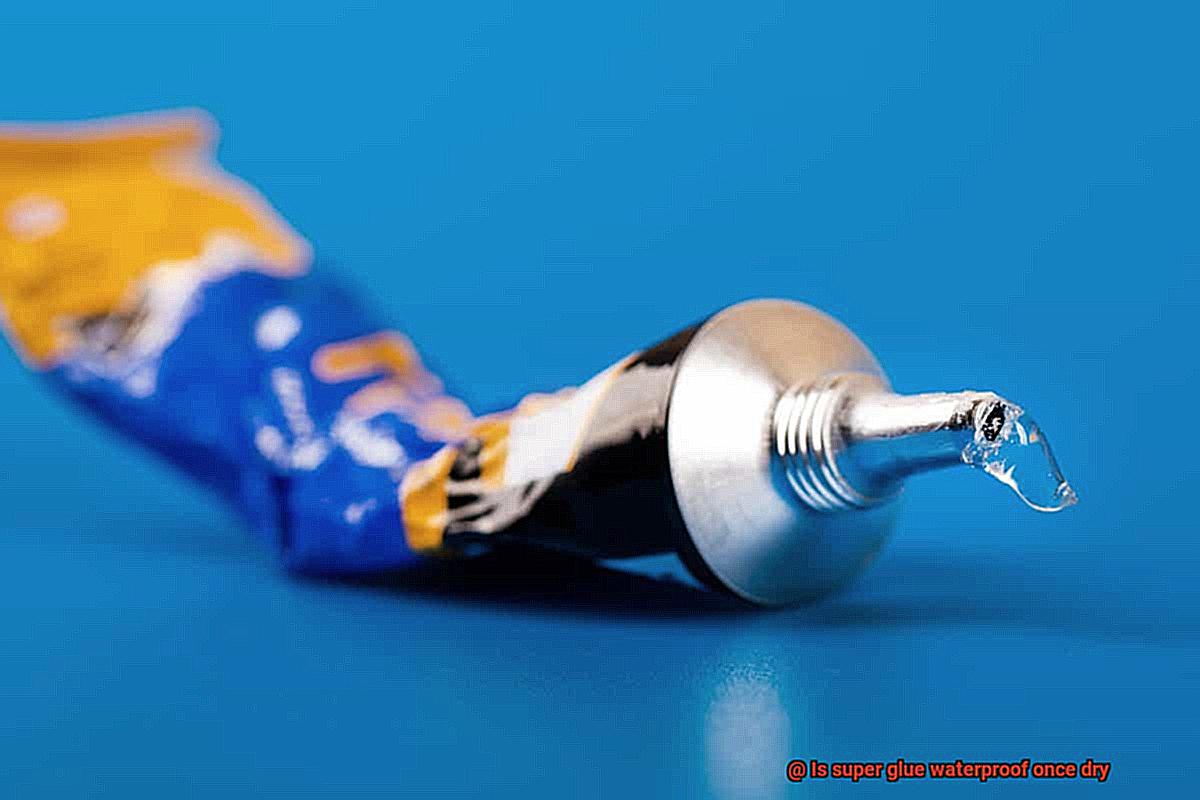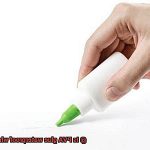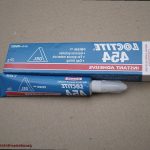Have you ever been in a situation where water has ruined an item that you needed to fix? Perhaps it was your favorite mug with a small crack or a loose tile in the shower. The thought of a leaky seal can be daunting, but fear not. Super glue may just save the day. But before we get ahead of ourselves, let’s answer the burning question – is super glue waterproof once dry?
Super glue, otherwise known as cyanoacrylate adhesive, is a powerful adhesive that boasts quick-drying properties and strong bonding abilities. It’s no wonder why many DIY enthusiasts and professionals alike turn to this trusty adhesive for their repair needs. However, its water resistance has always been a point of concern. Can it withstand water exposure without losing its strength?
In this article, we’ll dive deep into whether or not super glue is truly waterproof once dry and explore any limitations it may have. We’ll also discuss various factors that affect its water-resistance properties and offer tips on how to increase its ability to withstand water exposure. Whether you’re looking to fix something around the house or keep your belongings in top shape, keep reading to find out if super glue is up for the task.
What Makes Super Glue Waterproof?
Contents
Super glue, also known as cyanoacrylate adhesive, is a reliable choice for bonding all kinds of materials. From metal to plastic and even human skin, it’s known for its strength and quick-drying properties. But the question remains: Is super glue waterproof once dry? The answer is a resounding yes, and here’s why.
Super glue’s chemical composition is what makes it waterproof. It’s made up of a polymer called cyanoacrylate, and when it comes into contact with moisture, it reacts with water to create a hard, plastic-like substance that bonds surfaces together. This reaction creates a durable bond that can withstand exposure to water and other liquids. Whether you’re caught in the rain or accidentally spill something on your project, you can trust that the bond will remain secure.
Another essential feature contributing to super glue’s waterproof properties is its ability to fill gaps between surfaces. When applied correctly, it can create a tight seal that prevents any water from seeping through the bonded surfaces. This makes it an ideal adhesive choice for projects that require a reliable and waterproof bond.
However, it’s essential to note that while super glue is water-resistant, it isn’t entirely waterproof. Prolonged exposure to water can cause it to break down and eventually lose its adhesive properties over time. Therefore, it’s crucial to follow the manufacturer’s instructions carefully when using super glue for projects that require maximum water resistance.
How Does Super Glue React to Water?
Super glue, also known as cyanoacrylate adhesive, is a popular adhesive that has become a go-to for bonding different materials together. It’s quick-drying and renowned for its strong bonding properties. But the million-dollar question on many people’s minds is whether super glue is waterproof once it dries. As an expert in this field, let me take you on a journey to learn more about how super glue reacts to water.

When it comes to water resistance, super glue has mixed results. On one hand, it can resist water to some extent and maintain its bond strength. On the other hand, exposure to water can weaken the bond over time, especially if the water is hot or contains chemicals.
Super glue is not entirely waterproof and is susceptible to moisture. When super glue comes into contact with water, it undergoes a process known as hydrolysis. Hydrolysis breaks down the chemical bonds in the adhesive, causing the bond to weaken over time. The extent to which super glue is affected by water depends on various factors such as the type of material being bonded, the amount of water exposure, and the quality of the adhesive.
For instance, if the material being bonded is porous or has a rough surface, it may absorb more moisture and cause the bond to weaken faster. Therefore, it’s essential to consider the environment in which the bonded material will be placed and choose an appropriate adhesive accordingly.
In summary, while super glue can resist water to some degree, it’s not entirely waterproof. It’s vital to bear in mind that exposure to water can weaken the bond over time and cause it to fail. So if you’re working on a project that requires a reliable and waterproof bond like marine or underwater applications, it’s best to consider other adhesives that are specially designed for such purposes.
Factors That Affect the Waterproof Properties of Super Glue
Super glue is a versatile adhesive that has become a household name for bonding surfaces together. But, when it comes to waterproofing, there are several factors that can affect its ability to resist water.
First and foremost, the type of surface you are bonding plays a vital role in determining the waterproof properties of super glue. It works best on non-porous surfaces such as metal, ceramics, and plastics, which are less likely to absorb water. This means that super glue has a better chance of remaining waterproof when applied to them.
The amount of glue used is another crucial factor for the adhesive’s waterproofing properties. Too little glue may leave gaps between surfaces that can allow water to seep in and compromise the bond. Conversely, too much glue can take longer to dry and may not bond as strongly as intended.
The quality of the glue itself also plays a significant role in determining its ability to resist water. Not all super glues are made equal, and some may be more resistant to water than others. It is essential to choose a high-quality super glue that is designed for use in wet environments if you need a strong waterproof bond.
The temperature and humidity of the environment can also impact the waterproof properties of super glue. Extreme temperatures can weaken the bond, while high levels of humidity can slow down the drying process and make it more challenging for the glue to set correctly.
Tips for Creating Maximum Water Resistance with Super Glue
Super glue is a powerful adhesive that can bond almost any material with ease. However, when it comes to water resistance, there are certain precautions you should follow to ensure the strongest bond possible. In this article, we’ll provide you with five tips and tricks for creating maximum water resistance with super glue.
Clean and Dry Surfaces Thoroughly

The first step in creating a water-resistant bond with super glue is to ensure that the surfaces you are bonding are clean and dry. Any moisture or debris on the surfaces can weaken the bond and reduce water resistance. To avoid this, use alcohol wipes or sandpaper to clean and prepare the surfaces before applying the glue.
Apply Multiple Thin Layers
Applying multiple thin layers of super glue can create a stronger and more water-resistant bond than a single thick layer. This is because thin layers of glue can penetrate into the pores of the materials being bonded, creating a more secure bond. Be sure to allow each layer to dry completely before applying the next.
Add Baking Soda or Cornstarch
Another way to create maximum water resistance with super glue is by adding baking soda or cornstarch to the adhesive. This technique works by creating a chemical reaction between the baking soda or cornstarch and the cyanoacrylate adhesive, resulting in a thicker and more durable bond that is resistant to water.
Use a Primer or Activator
Using a primer or activator designed specifically for super glue can enhance its bonding strength and water resistance. These products can help to create a stronger bond between the surfaces and the super glue, making it less likely to break or weaken when exposed to water.
Allow Time for Drying
Allowing the super glue to dry completely before exposing it to water is crucial in creating a strong and water-resistant bond. While it usually takes only a few minutes for the glue to dry, it’s important to wait until it has fully cured before testing its water resistance.
In conclusion, by following these tips and techniques, you can create a strong and water-resistant bond with super glue. However, keep in mind that even with these precautions, super glue may not be suitable for long-term exposure to water or extreme weather conditions. In such cases, it’s best to use a specialized waterproof adhesive for optimal results.
Alternatives for Applications Requiring Maximum Water Resistance
When it comes to applications that require maximum water resistance, super glue might not always make the cut. In this blog post, I’ll delve deeper into the advantages and disadvantages of alternative adhesives that provide superior protection against moisture.
First up is epoxy resin. This two-part adhesive creates a strong and durable bond, even in wet conditions. Epoxy resin is a popular choice for marine applications, like boat building and repair, due to its ability to withstand saltwater and harsh environmental conditions. The advantage of epoxy resin lies in its unbeatable water resistance, making it ideal for projects exposed to moisture. However, the disadvantage of epoxy resin is its longer curing time compared to other adhesives.
Next on the list is polyurethane adhesive. This type of adhesive is also known for its water resistance and can be used for a variety of applications, including sealing and bonding surfaces exposed to water or moisture. Polyurethane adhesive has a faster curing time than epoxy resin, which makes it a good choice for projects that require quick turnaround times. However, polyurethane adhesive may not be as strong as epoxy resin.
For applications where flexibility is required, silicone adhesive takes the lead. Silicone adhesive creates a strong bond while maintaining flexibility, making it ideal for use in areas that experience movement or expansion due to changes in temperature or other factors. The advantage of silicone adhesive lies in its flexibility, allowing it to adapt to changes in the environment. However, the disadvantage of silicone adhesive is its lower strength compared to other adhesives.
-bwjyPhEACk” >
Also Read: Is Super Glue Waterproof? – Glue Things
Conclusion
In conclusion, super glue is a versatile and reliable adhesive that dries quickly and forms a strong bond between surfaces. Its chemical composition and ability to fill gaps also make it somewhat water-resistant. However, extended exposure to water can weaken the bond over time, so it’s crucial to follow the manufacturer’s instructions carefully for maximum water resistance.
To achieve maximum water resistance with super glue, clean and dry surfaces thoroughly before applying multiple thin layers of glue. Adding baking soda or cornstarch can also enhance its bonding strength. However, for applications requiring superior protection against moisture, alternative adhesives such as epoxy resin, polyurethane adhesive, or silicone adhesive may be more suitable.
It’s essential to consider factors such as the type of surface being bonded, the amount of glue used, and the quality of the adhesive itself when choosing an adhesive for your project. By understanding each adhesive type’s strengths and limitations and following proper application techniques, you can ensure successful results every time.
Whether you’re fixing a small crack in your favorite mug or working on a marine application that requires superior protection against moisture, there are various options available for achieving a strong and reliable bond.






